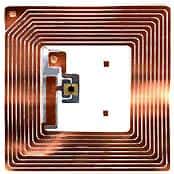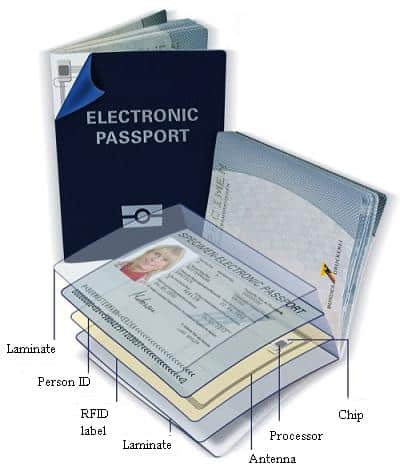There are two types of RFID devices: Active and Passive. Active devices have a power source built-in, which supplies the transmitter. The transmitter is triggered by sending the signal to an RFID device. These devices have their own code and can transmit signals in desired time intervals. Active RFID devices are good in defining locations of objects or sending some information about a particular place (RFID-based location determination). Active RFID devices use high frequencies (455MHz, 2,45GHz, or 5,8GHz) – working range about 20 – 100 meters.

The most common are passive RFID. They don’t need a power source. Passive RFID devices are low frequency(124 – 135kHz – low) and high(13,56MHz – 960KHz – high; 2,45GHz – UHF). The working principle of low and high-frequency devices differ. Simultaneously, low-frequency readers generate a magnetic field that induces a current in the RFID device antenna. The chip inside the RFID device modifies this magnetic field, which is reread by the reader. The working distance of such a device is about 35cm.
High-frequency RFID labels work a little differently. There is no magnetic field between the reader and the RFID label. A reader sends a radio signal which energy is used to power inside the chip, which changes RFID label antenna charge – this modulates reflected wave. Modulation can be done by amplitude or phase. With high-frequency passive RFID devices, the working distance may reach 3 meters. In some passive RFID devices, there may be a power supply used to increase working distance.
RFID labels carry some information that can take 32kB. For instance, using frequency 13,56MHz reading speed is about 3kB/s.
RFID isn’t new technology. It is successfully used in many industries like road taxes, where an RFID label is located inside a car. You don’t even need to lower your speed – reading is done automatically. Now in the USA, car numbers have such labels built-in. Other widely used are markets, where all items are labeled with RFID labels. This is for theft prevention. The same method is also used in vehicles where an RFID key is used to unblock the engine.

RFID labels are successfully used in passports. In the USA, passports are used with 64kB memory where are personal data (biometric data, blood type, and other identification data) stored. This type of passports is almost impossible to fake.
Even money can be labeled with RFID chips. From 2001 USD and EURO have small (less than 1 square mm) chips are pressed in bills(near security strip). These chips are so-called “smart dust.” If you put such a bill in the microwave, the chip burns to leave a hole in a bill. Don put your money in the microwave…
Well, RFID technologies affect my life two. I have a passive RFID card, which I use every day at my work as an ID to enter facilities. I don’t even need to take it out of my wallet – I wave near the reader, and my door opens…






Your post is full of scientific errors. There is no “smart dust” in money. 455 MHz is not a “high frequency”. It’s an ultra-high frequency. etc.
[This type of passports is almost impossible to fake]
The media itself dont make anything more secured. It’s like saying that we print 64k data on paper and wave it open in the air for everyone to read (since everyone can read your passport just standing at your side…) and then on-one can copy it…
Copy it and insert your biometric data and you get a nice passport.
To not make this possible thay need a database to check the data against. And then it’s just stupid to store the info on 2 places, just insert a database ID so thay can get the data, and then can be printed on paper, but hay! passport number can be used for that and we already do it.
…but I forgot, biometric computer passport sounds cool, so lets use it 🙂
Many scientist are of opinion that they want RFID devices for humans for tracking. They say this would make identification and verification of a person much simple and easier. The chips, called radio frequency identification (RFID) tags, emit a simple radio signal akin to a bar code, anywhere, anytime. Futurists say they can be easily implanted under the skin on a person’s arm.
In my opinion it sounds great, what’s your say on this.
Thanks